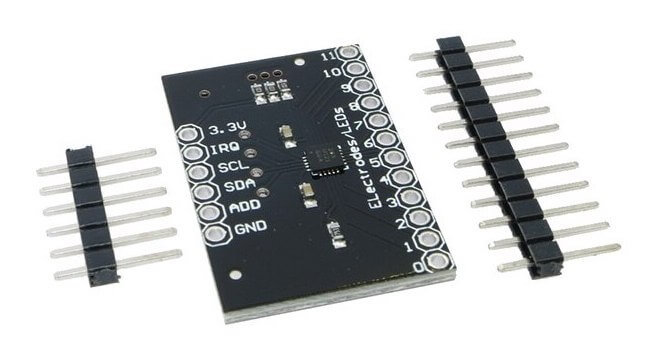After remaking the District Hall gumball machine, with a stepper motor and a newly engineered case, you turn your attention to making one for Fab@CIC - with a twist.
Fab@CIC's Mixed Reality Challenge, located at the entrance, has two goals: to get you to play the game, yes, but also to lure you to the rear of the coffeeshop, where things start to get makery.
So in the new version at Fab@CIC:
- The gumball style capsule machine at the entrance now has more than trinkets and googley eyes: the capsules now contain origami "magic stars" that will give you the first clues towards you getting a FREE CUP OF COFFEE.
- The first step towards this free coffee is in the direction of the new Wunkerkammer shelf -- towards the back of Render Cafe, where it starts getting more Fab@CIC-ish.
- And on this Wunderkammer shelf -- there's an interaction, starring a metal oak leaf, that will allow you to get that FREE CUP OF COFFEE without having to download an augmented reality app. You just have to touch it.
Capacitive Sensors
The sensor driving this last interaction -- with the metal oak leaf -- is a capacitive sensor.
Why? Because you were getting tired of having to explain the augmented reality interface.
Primarily because... augmented reality is invisible to the new, arriving person.
That puts an extra burden on you, the programmer. First you have to tell the visitor that there is something on the wall, and then get them to a) download an app; and b) look for it.
Too much trouble.
So instead: a simple capacitive touch sensor. You just have to touch it, and a nearby LED display tells you the Secret Word that gets you a free cup of coffee.
You buy a bunch of capacitive sensors from China. They are a dollar and change each.
They look like this:

You have to appreciate the endless webpages at AliExpress. Like this one. They go on forever, as if they have just one more thing they want to tell you.
The capacitive sensor senses the electrical charge from your finger on something conductive, like metal. Very simple.
Copper has high electrical conductivity, so you went with a copper oak leaf that you bought for a few dollars at a Boston craft store.
Online the best source of capacitive touch info was Bare Conductive, which tried to build an entire company around it. If you didn't already own all of the components, you would have definitely sprung for one of their Touch Boards.
They were good at explaining how the Touch Board, and capacitive resistance, works:
Each Touch Board electrode generates a sensitive electric field.
Your finger couples with the electrode’s field and connects it to earth, which the Touch Board can detect. Each Touch Board electrode generates a sensitive electric field. Touch screens on your smart phone or tablet, or the trackpad on your laptop also work with capacitive sensing.
Capacitive sensing is a proximity sensing technology. It detects nearby objects by sensing that the electric field generated by a sensor (in this case one of the 12 electrodes), has been disrupted. It can detect anything that is conductive or that has a significantly different permittivity* than that of air, like a human body or hand. Capacitive sensing is the technology used in smart-phone screens to detect touch. It’s also used in other situations where there’s a need to detect human touch or proximity. It’s also used when trying to detect something without touching it. The Touch Board has 12 capacitive sensing electrodes, each of which can individually detect touch and proximity.
After waving your hands to explain AR, a simple touch interface was refreshingly primal.
Unfortunately, you didn't get to use it that much, because not long after you got it all set up (and this is moving ahead a little bit) the Coronavirus pandemic arrived, and no one wanted to touch anything.
That's when you moved on to gesture sensors, but that's getting ahead of the story.